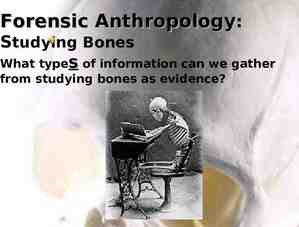Project Management COE Helen Schmitz, Chief IT Architect (Acting) June
20 Slides1.01 MB
Project Management COE Helen Schmitz, Chief IT Architect (Acting) June 10, 2009
Agenda What Enterprise Architecture (EA) is The components and how they are used What we do How to work with us Website: http://EnterpriseArchitecture.nih.gov Contact: [email protected] Page 2
What is Enterprise Architecture? Website: http://EnterpriseArchitecture.nih.gov Contact: [email protected] Page 3
What is Enterprise Architecture? “Enterprise Architecture is the strategic plan & design for IT.” “Enterprise Architecture at the NIH uses technology to extend the capability of the NIH to save lives. It creates a holistic vision or model of systems, processes and components to ensure that they interoperate like the different systems in a healthy body.” – EA elevator speeches created by members of the Office of the Chief IT Architect (OCITA),12/04/2006 Website: http://EnterpriseArchitecture.nih.gov Contact: [email protected] Page 4
NIH Enterprise Architecture Mission and Vision Mission – To develop a comprehensive plan for IT support at the NIH which acknowledges the need for both conforming and diverse business processes. Vision – The National Institutes of Health (NIH) Enterprise Architecture (EA) will enable efficient business processes and information access for all NIH Institutes and Centers (IC) by providing the necessary: Common models Frameworks Standards – by which to build and plan: Shared NIH enterprise systems A secure and robust core IT infrastructure. Website: http://EnterpriseArchitecture.nih.gov Contact: [email protected] Page 5
Enterprise Architecture is Analogous to City Planning City Planning Enterprise Architecture City Council IT Working Group (ITWG) Zoning Board Architecture Review Board (ARB) Master plans Business models and conceptual data models Utilities Common infrastructure Building Application Building Code Standards & Interfaces Building Permit Process Exception Process L’Enfant’s Plan of Washington DC (1791) - Supports the mission - Over-arching Website: http://EnterpriseArchitecture.nih.gov Contact: [email protected] - Long range - Can be modified Page 6
What are the Benefits of EA? The overall NIH Enterprise Architecture offers many benefits to the enterprise. These desired benefits, along with Federal regulations and legislation, drive the development of the enterprise architecture program. The six most important benefits include: 1. Links information technology (IT) to the mission of NIH 2. Improves interoperability and integration 3. Enables agility 4. Reduces costs 5. Improves security 6. Reduces technical risk Website: http://EnterpriseArchitecture.nih.gov Contact: [email protected] Page 7
NIH Enterprise Architecture Framework Used to structure the EA effort and to classify the EA components: – Business Architecture – Information Architecture – Technology Architecture Architecture is a process, not a one-time event Website: http://EnterpriseArchitecture.nih.gov Contact: [email protected] Page 8
Business Architecture Activity Actor Who does what . Asset Time using which resources . Activities are supported by Application Location when and where. Assets are generalized and defined as Data Models Why it matters . when . and you are . » You can understand how important and common activities are completed at NIH. » You don’t need to redefine or discover the process for the same or similar activities » You are defining requirements for a new IT project. » You are planning revisions to existing application. » IT project managers » “Business people” working closely with leadership and ground level operations. Website: http://EnterpriseArchitecture.nih.gov Contact: [email protected] Page 9
Value of HPSD-12 Personal Identity Verification (PIV) Business Process Models Provides view of end-to-end NIH Personal Identity Verification (PIV) business process Identifies and communicates roles are responsibilities to all stakeholders Shows integration with/linkages to existing NIH people processes Provides functional requirements for IT PIV support system design Establishes an agreed upon baseline from which to manage future changes NIH HSPD-12 models used to brief Congress on the value of business process Website: http://EnterpriseArchitecture.nih.gov Page 10 Contact: [email protected] models
Information Architecture Application Data Model by standardized representation of data . Why it matters . when . » You can identify existing design for all or part » You are making decisions of your system. about how to manage information to maximize its » You can understand environment around value to NIH. you, and participate in the enterprise plan. » You can achieve efficiency at the global level. » You are defining technical design specification. » You can share data more easily because » You are working through data are represented in standardized way. the detailed design. Website: http://EnterpriseArchitecture.nih.gov Contact: [email protected] Integration and relate to each other. and you are . » Business owners of Information » Technology stewards (CIOs, and others) » IT project managers » Solution architects Page 11
Data Architecture NIH Enterprise Conceptual Data Model Website: http://EnterpriseArchitecture.nih.gov Contact: [email protected] Page 12
Pattern Applications relate to each other . Brick and are supported by infrastructure. Community Content Technology Architecture Best Community Practice Case Studies Sample Code and Technical Documentation Vendor Documentation User contribution enhances the overall content. Why it matters . when . » You don’t need to spend time figuring out viable technical components and solutions used at NIH now and in the future. » You can reduce time and improve quality of proposal. » You can reduce variants in solutions, and save money on development and training. » You are selecting a specific » Solution architects technical components to » Developers and support the design. designers » Contractors Website: http://EnterpriseArchitecture.nih.gov Contact: [email protected] and you are . Page 13
How Standards are Developed Domain Team process http://enterprisearchitecture.nih.gov/About/Appro ach/DomainTeamProcess.htm NIH Request for Comments (NIHRFC) http://enterprisearchitecture.nih.gov/About/Appro ach/NRFC.htm Website: http://EnterpriseArchitecture.nih.gov Contact: [email protected] Page 14
Technology Architecture Artifacts Patterns Design ideas that can be reused and leveraged across NIH. Example: http://enterprisearchitecture.nih.gov/ArchLib/AT/T A/NIHFederatedIdentityPattern.htm Bricks NIH standards that specify products, technologies, or protocols in use or planned, as well as those earmarked to be retired or contained. Example: http://enterprisearchitecture.nih.gov/ArchLib/AT/T A/NIHFederateIdentityAuthenticationAuthorization .htm The Enterprise Architecture Program has established 61 bricks and 50 patterns to date through the NIH EA standards process. Website: http://EnterpriseArchitecture.nih.gov Contact: [email protected] Page 15
Technology Transformations OCITA has coordinated the implementation and planning of innovative technologies and handed them off to CIT to manage for O&M. – NIH Login – Service Oriented Architecture (SOA) – Business Process Management software – Federated Authentication Website: http://EnterpriseArchitecture.nih.gov Contact: [email protected] Page 16
Current Integration Service Center Web Services ISC Web Service Usage 140000 120000 100000 SendWordNow Service Invocations Other Ned Person 80000 POservices LookupProjects CheckFunds 60000 Create Requisition Security Training Commons Person 40000 20000 0 Oct 07 Nov 07 Dec 07 Jan 08 Feb 08 Mar 08 Apr 08 May 08 Jun 08 Aug 08 Sept 08 Oct 08 Nov 08 Dec 08 Jan 09 Feb 09 Mar 09 Apr 09 May 09 Month Website: http://EnterpriseArchitecture.nih.gov Contact: [email protected] Page 17
What does OCITA do? Defines EA Components – Standards, models, designs, plans and governance to support them – Provides a library of: Bricks/patterns, published NIHRFCs, business process models, data models, case studies, and more Provides consultative advice – Provides advice and guidance to PMs at the concept and design stage of the project to ensure solid architectural decisions – Validates alignment to existing infrastructure Ensures EA is available to anyone at anytime and is easy to use Website: http://EnterpriseArchitecture.nih.gov Contact: [email protected] Page 18
How can OCITA help me? What will OCITA do for me? – Communicate to project teams the EA products that will be useful to you – Provide information about similar systems or services that can be of use – Provide guidance on data and business processes that should be used When should I contact OCITA? – If you are creating a new system or updating the current system At the concept stage of an IT project At the design stage of an IT project – If you have a system you are modifying which requires data from other ICs or other systems – If you are putting out an RFP/RFC Website: http://EnterpriseArchitecture.nih.gov Contact: [email protected] Page 19
Contact Information Website: http://EnterpriseArchitecture.nih.gov The NIH Enterprise Architecture Community in the NIH Portal Email: [email protected] Subscribe to the EA LISTSERV: http://list.nih.gov/archives/enterprise architecture.html Integration Service Center Website: http://isc.nih.gov Website: http://EnterpriseArchitecture.nih.gov Contact: [email protected] Page 20

























